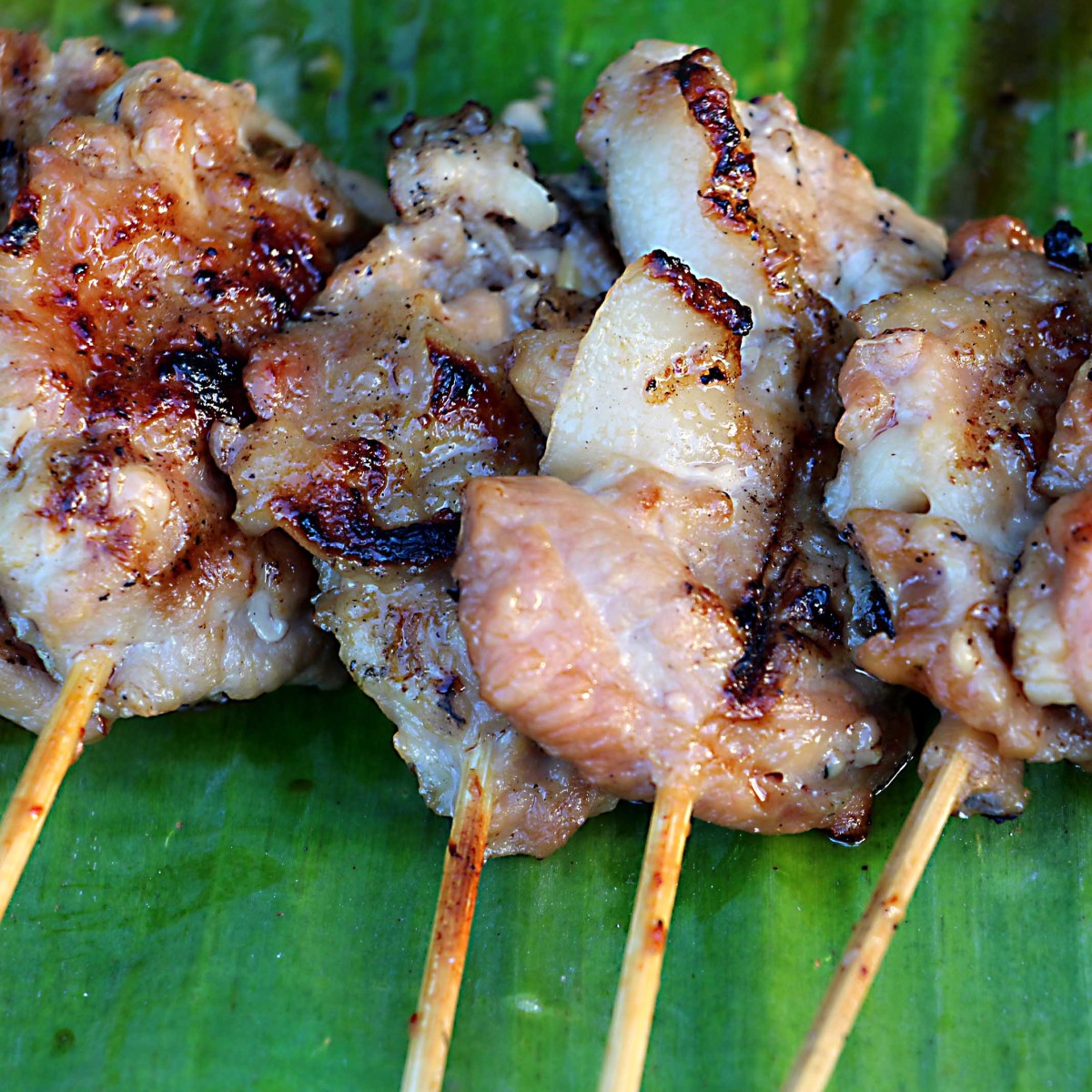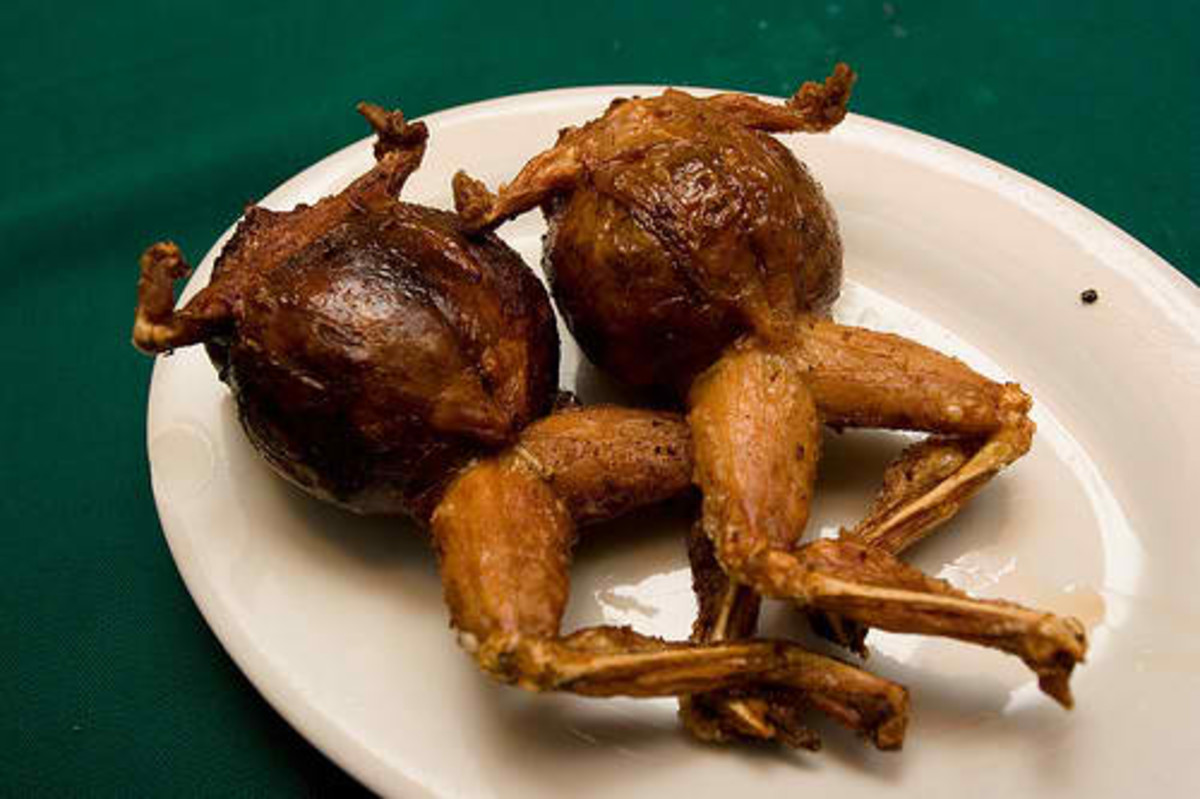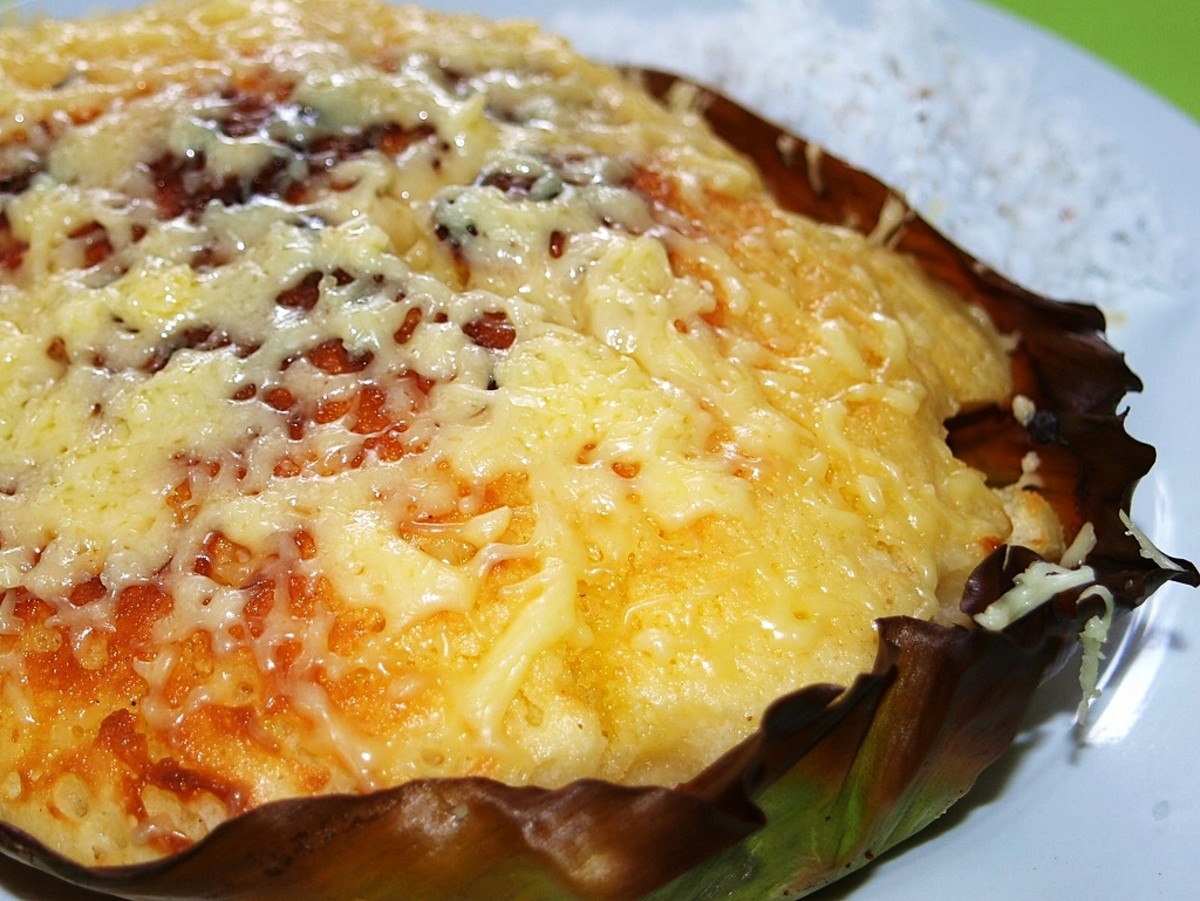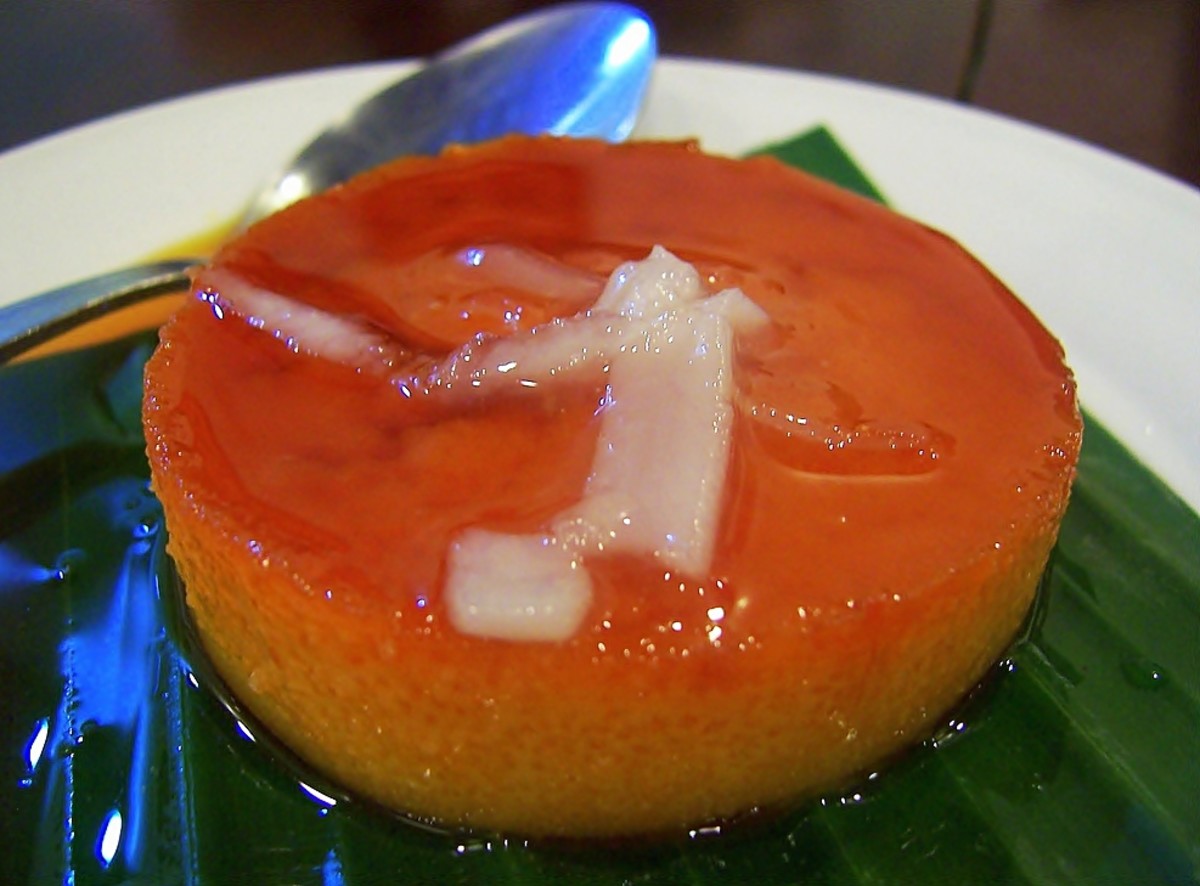- HubPages»
- Food and Cooking»
- World Cuisines»
- Southeast Asian Cuisine
Pad Thai: The Ultimate Street Food
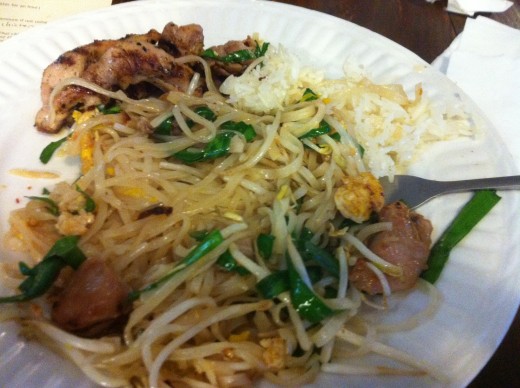
A Dish With History
For many people, the signature dish of Thai cuisine, the dish most often ordered at any Thai restaurant in any state, is pad Thai. No doubt, the delectable stir-fry noodle dish has many merits, one of them being that it is completely and utterly addictive. While you may be familiar with the dish, the truth is that kway teow pad Thai (the full, accurate name) is not native to Thailand. Kway teow in Chinese refers to rice noodles, and it is thought that an earlier version of the dish was brought to Thailand by Chinese settlers coming from southern China. Also, the cooking style of stir-frying is distinctively Chinese. Origins and cooking style aside, the flavors and textures of what we have come to know and love about pad Thai are deliciously, mouth-wateringly Thai.
How Did Pad Thai Become So Popular?
Ever wonder why the sudden explosion of pad Thai fever? I certainly did, and with the help of an article by Alexandra Greeley in the winter 2009 issue of GASTRONOMICA, I retraced the steps of the emergence and rise of such an iconoclastic recipe. As it turns out, one very important person is credited with popularizing what we know as pad Thai today: Prime Minister Pibulsonggram. An influential leader, in 1939 he officially changed the name of the country from Siam to Thailand, which means “Land of the Free.”
He wanted, among other things, to improve the Thai economy and the national diet. One way to do that was to endorse a noodle dish that was nutritious, affordable to make and supportive of Thai farmers and their crops. Adding bean sprouts, peanuts, onions, eggs and meat to the noodles made the dish protein rich and a source for national pride. In the 1940s, a time of many floods and fear of diseases, pad Thai was also seen as a very sanitary dish—the noodles were served piping hot and cooked in clean pans.
In order to further encourage people to jump on the pad Thai bandwagon, Pibulsonggram and his government widely distributed the recipe and urged vendors to use their noodle carts (think mini food trucks) to sell the dish to customers on the busy streets of Bangkok. From this, the popularity of pad Thai as a convenient, cheap and healthy meal exploded, especially for the lunchtime crowds. From the heart of a bustling city pad Thai spread to rural areas all over the country, eventually making its way to the Western world.
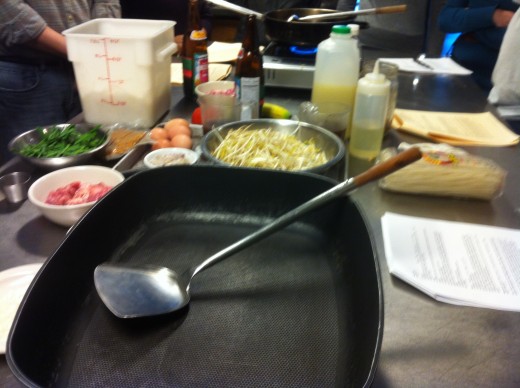
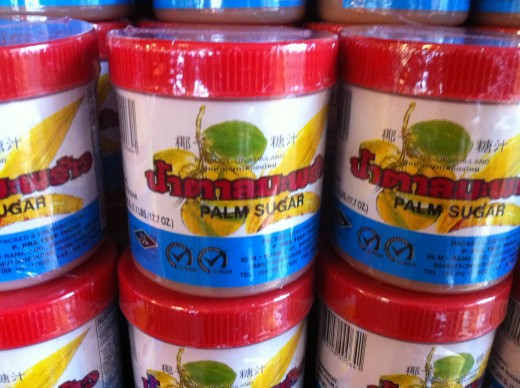
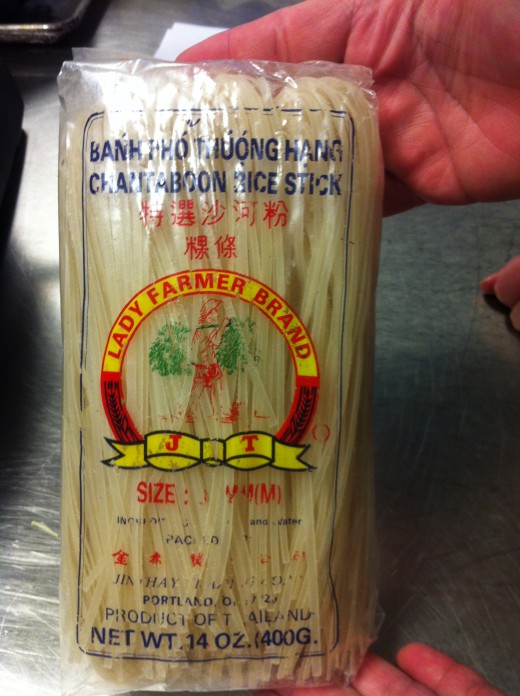
Elements of Pad Thai
Another explanation as to why pad Thai is so coveted and sought after by casual diners and foodies alike is the balance of flavors and textures. In a successful recipe, you will find a perfect equilibrium between salty, sour and sweet; depending on where you are in Thailand (and on your personal heat tolerance) chilies are added to taste, ranging from barely noticeable to scorching hot. In terms of texture, you get both a soft, chewy mouth feel (noodles, shrimp, tofu) and a delicate crunch (bean sprouts, peanuts). In Thailand, local ingredients such as raw mango, star fruit or banana blossoms are used as a garnish for even more crunch and sour taste.
And while it is said that the best pad Thai is found on hidden streets, side alleys, and tucked away corners in Bangkok, for those of us who can’t get there, there is still hope to have an amazing version filled with exceptional ingredients and flavor. Just be wary of those chefs who do not pay attention to balance, who break all of the rules, or who ignore crucial Thai ingredients altogether.
The following is a recipe given to me by a friend from the south of Thailand, Jam.
Pad Thai Recipe
Serves 2
Pre-prep
Soak rice noodles in cold water for an hour. Make Pad Thai sauce (see below)
2 Tbsp. vegetable oil
4 oz. dried, thin rice stick noodles (pre-soak in cold water for an hour)
2 small bunches Chinese chives, green onions or scallions (use the last 2 inches closest to the root, which has more flavor)
1 shallot, minced
2 eggs, fresh
2 oz. extra firm tofu, cut into small cubes and deep fried or pan seared (double amount if not using shrimp)
6 shrimp (about ½ cup whole shrimp, cleaned and shelled)
2 oz. pork or chicken
2 tsp. salted radish (sold in Asian markets)
1 pinch Thai chili flakes (can be bought, or to make your own simply buy dry Thai chilies and dry roast them in a pan for 10 minutes, stirring constantly, then pulse in a food processor until they become flakes)
2 handfuls bean sprouts
2 Tbsp. crushed roasted peanuts
1 lime, quartered
Sauce
2 Tbsp. palm sugar (sold at Asian markets)
1 Tbsp. white sugar
2 Tbsp. tamarind water (you can buy this pre-made or make it yourself: see my hub on green papaya salad for the recipe)
2 Tbsp. fish sauce
To make sauce: Mix palm sugar, white sugar, tamarind water and fish sauce and let ingredients simmer in a saucepan until dissolved and clear
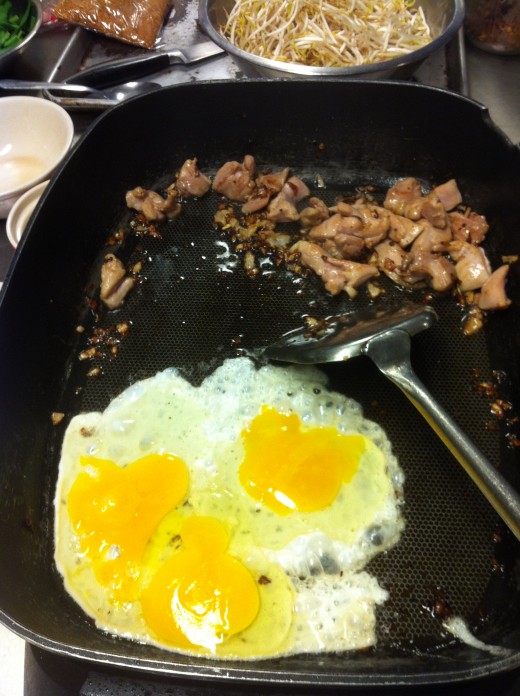
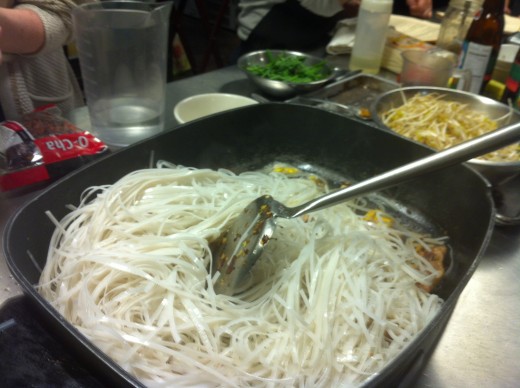
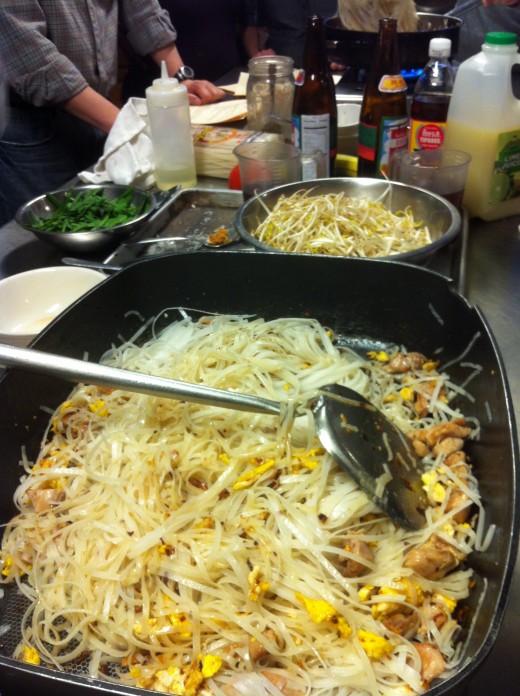
Cooking Directions
It’s best to use a wok, but if you don’t have one, a large pan will suffice
1. Heat wok on medium-low
2. Once wok is heated (about 1 minute), add oil
3. Add shallots, fry until fragrant and golden brown
4. Crack in eggs; let them FRY for about 1 minute
(do NOT scramble)
5. Stir in eggs and mix with shallots
6. Add tofu, shrimp, chili flakes and radish
7. Stir fry until tofu is thoroughly heated and light brown in color
8. Add noodles
(A good trick for cooking the noodles is to spread them out along the bottom of the wok and then flip them with a spatula)
9. If using shrimp, take them out to avoid overcooking and reserve for later
10. Turn up heat to medium and stir-fry until noodles are tender and translucent and brown in color
11. Add prepared sauce
12. Stir everything together for 1-2 minutes
13. Return shrimp to the wok
14. Add bean sprouts and Chinese chives; cook for another 30 seconds
15. Taste noodles; they should be sweet, sour and salty
(add more sauce if needed, or water if too strong in flavor)
16. Mix well; spoon portions into separate bowls
17. Garnish according to taste; see below
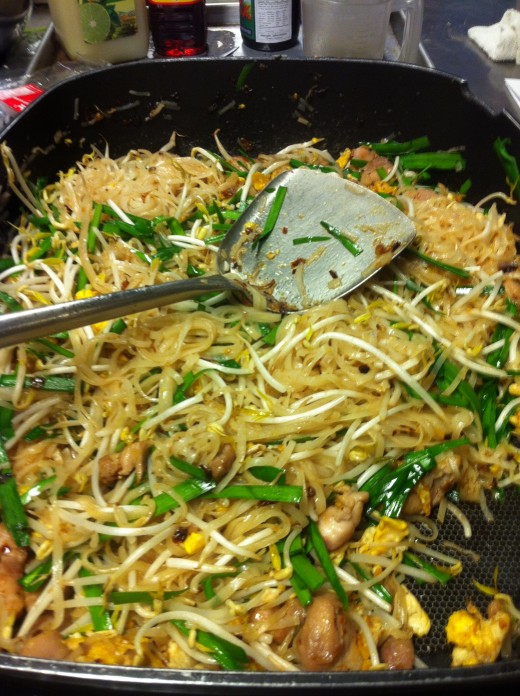
Thailand's Most Recognizable Dish
When serving, top the pad Thai with crushed peanuts, fresh chines chives, bean sprouts, and a wedge or two of limes. You can also add chili powder if you want your pad Thai a little hotter! Also, be sure to have all of the ingredients within reach as you have to work fast with this dish. The good thing is you will have a homemade, premier noodle dish with a fresh and rounded flavor. And who knows; after just a few bites of this pad Thai, you may just have visions of Bangkok...

